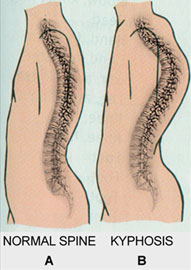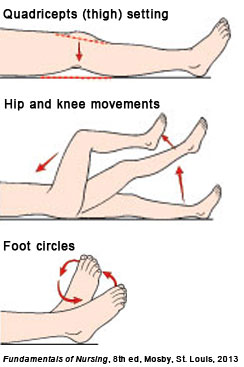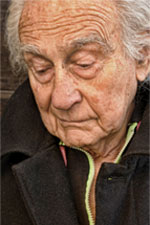Need to Know
To become a good observer, you need to look for many of the same things doctors and nurses look for in patients. Begin by knowing what is normal. As you become comfortable as an observer you will begin to notice more about the person you care for. Make it a habit to observe the person you care for each day as they take part in their daily routines.
What to Observe
Physical Appearance – When you first look at someone notice how alert and attentive they are and how they respond to your questions.
- Look at their skin, is the color tone usual for them over the arms and legs? Is the skin smooth and even? When you touch their skin, is it warm and dry?
- Are there any skin lesions - obvious cuts, sores, bruises, bumps, rashes, moles, or discolored areas you have not seen before?
- When the person talks with you, are their facial features equal on both sides – or do you notice any drooping of the eyelids, mouth, or muscles of the face? Does the person drool while eating?
Your first thoughts are important – do you notice any signs of the person being in distress? For example, does the person breathe normally with little movement of their chest or does he or she gasp for air.
When someone is in pain – you will usually see them grimace or hold the body part that hurts. Others may just limit activities that increase their pain and not show outward signs of pain. See our lesson on Recognizing and Relieving Pain.
Weight – a person's weight can change suddenly or slowly over time. For example, a change in appetite due to depression, pain or disease such as cancer, is a common causes of weight loss. A gain in weight often occurs when a person retains fluids due to heart failure.
- Have a person weigh each day; the same time each day.
- It is best if the person weighs just before taking a bath or shower. If not, have the person wear the same amount or type of clothes, each time he or she weighs.
- Be sure the scale is balanced and giving you an accurate reading.
Your first thoughts are important – do you notice any signs of the person being in distress? For example, does the person breathe normally with little movement of their chest or does he or she gasp for air.
When someone is in pain – you will usually see them grimace or hold the body part that hurts. Others may just limit activities that increase their pain and not show outward signs of pain. See our lesson on Recognizing and Relieving Pain.

Posture and Position – The way a person holds their body tells you a lot about their health.
- Look at the person’s posture – normally a person stands with their head erect and their back is comfortably straight. An exception is older adults who commonly have a stooped curve of the spine called Kyphosis (kīfō´ sis). Posture often reflects a person’s energy level, mood or if they are in pain.
- Look at the person’s body position while he or she sits in a chair. Normally a person sits comfortably in a chair with arms relaxed at their sides and their shoulders usually a bit rounded.

Mobility – The way a person moves about will tell you if there are problems with the bones, muscles or nerves in the body.
- Watch the gait or how a person walks. Normally the feet are spaced as wide as the shoulders. A person places their feet down heel to toe and straight, the arms swing equally back and forth, and their gait is even and well balanced. Also, notice if the person begins holding onto the furniture or the walls for support while they walk.
- When a person moves, the joints in their body should be able to go through a full range-of-motion. This means for example, when you move your lower arm, you can bend and flex fully at the elbow and you can rotate the arm back and forth. Every muscle and joint has a normal range of motion.
- Observe a person as he or she grasps a medicine container, washes the dishes, eats food, puts on clothes or sweeps the floor.
- Can the person move joints fully and freely, without pain?
Behavior – A person’s behavior is always changing, but you should be a good judge of what is normal for the person you care for. A change in behavior can be an early sign of a problem. Remember, all behavior has meaning.



- Observe facial expressions for clues as to how a person is feeling. For example, if a person is tired, you may notice that they sigh a lot, have a listless expression and often are looking down. You may also notice an anxious person looks around a lot with their eyes wide open, or if they are sad, the person looks down, has poor eye contact, and shows a blank facial expression.
- Notice the person’s mood – Is the person you care for usually happy, cooperative and interacting pleasantly? Or is the person usually down, irritable and unwilling to talk? Each person has his or her own normal mood. What you look for is a change, which may be very gradual.
- Without warning is the person hostile towards you, distrustful, suspicious or crying?
- Has the person lost interest in favorite activities?
- Does the person only answer questions without starting or continuing conversations?
- A person’s speech can quickly let you know if there is a problem. Normally a person forms words clearly and you can understand what they are saying. The stream of talking back and forth is evenly paced. A person is able to share ideas clearly.
- Notice how a person reacts to you when talking. Hearing loss is something that often develops gradually. A person with a hearing loss might have a blank expression when asked a question, or simply smile and nod their head even though they do not hear what you say. The person might not react to loud noises or he or she might raise their voice when speaking.
- How a person dresses can tell you how well they take care of themselves and not just what style of clothes they choose to wear or can afford to buy. Examples of signs of progressive dementia include: a person stops bathing routinely, hair is unkempt, clothes are not clean or laundered, and they wear wrong clothes for the weather outside.
- A person’s hygiene such as the frequency of bathing, how they groom their hair or shave, or how a woman uses make-up should match their age, job and social lifestyle. If a person used to carefully groom himself or herself, a gradual unkempt appearance or absent makeup may be a sign something is wrong.
Mental Status – During the daily activities you spend with a person, you will talk together. Pay attention to what the person says, it will tell you about their mental status, their ability to think clearly, remember, and make decisions.
- Is the person oriented? Meaning, does he or she usually know the time of day, day of week, and where they are?
- Check a person’s ability to concentrate and pay attention. Do they complete a thought, wander back and forth with ideas, or doze more often? Are they easily distracted by something? A poor attention span is common in someone who is anxious, very tired or who is starting to become ill.
- Is the person you care for able to remember events that have happened in the last few days? For example, a visit with a grandchild, a story on the evening news, the rain storm from last night? Recent memory loss is common in persons with dementia.
- Be alert when a person changes the way he or she makes decisions or problem solves. You might notice that the person has poor judgment when dealing with money or what to buy for groceries. The person may not remember how to do familiar tasks.